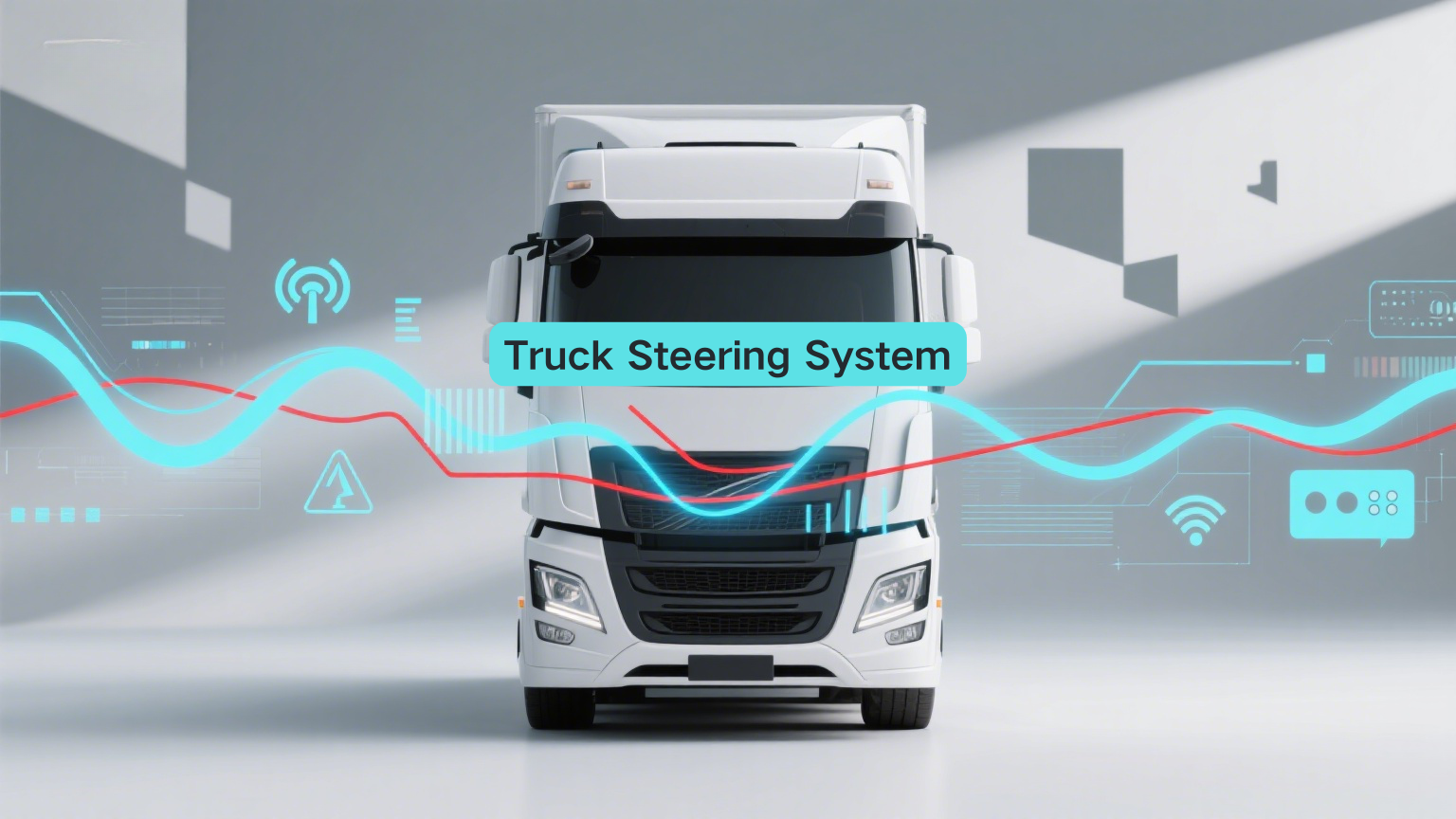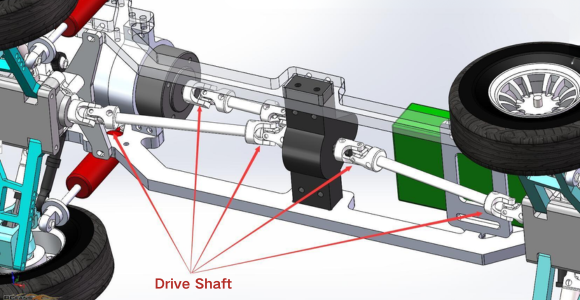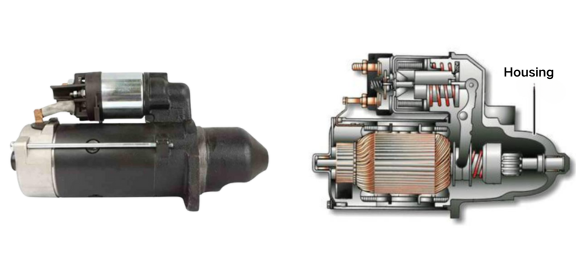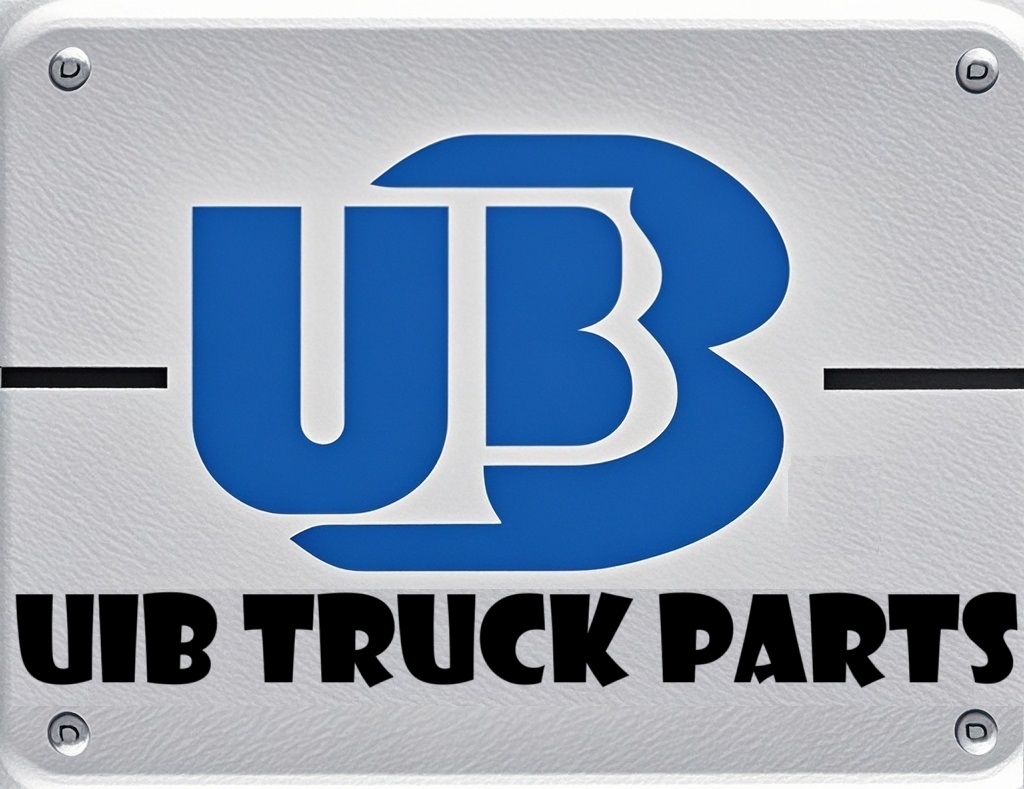About Us
Truck Steering System: Core Guarantee for Control
Views : 7
Update time : 2025-07-11 11:20:15
The steering system is the core of precise control of a truck, determining the flexibility, stability and safety of driving, ensuring that the driver can accurately control the direction and adapt to various road conditions.
I. Basic Structure of the Steering System
(I) Steering Control Mechanism
It consists of a steering wheel, steering column and connecting parts. The steering wheel is convenient for the driver to apply force, and the steering column transmits the rotation to the steering gear. Some high-end trucks can adjust the steering assist force to improve the driving experience.
(II) Steering Gear
It is the core of the steering system, converting the rotational movement of the steering wheel into the deflection angle of the wheels. There are mainly recirculating ball type and rack-and-pinion type.
- Recirculating ball type: It has two-stage transmission pairs, using steel balls to reduce friction, with high transmission efficiency and long service life, adapting to the heavy load characteristics of trucks. However, it is slightly less sensitive, and the hydraulic assist can alleviate the "steering wheel kickback" phenomenon.
- Rack-and-pinion type: It has a simple structure, high sensitivity and low cost, and is commonly used in passenger cars. However, due to the high requirements for reliability and load-bearing capacity of trucks, the recirculating ball type is more popular.
(III) Steering Transmission Mechanism
Connecting the steering gear and the wheels, it is composed of steering arm, straight pull rod, knuckle arm, trapezoidal arm, tie rod, etc. It converts the output of the steering gear into wheel deflection. Large trucks often use a segmented structure to improve reliability.
II. Power Assist System: Key to Improving Control Performance
(I) Mechanical Hydraulic Power Assist System
Traditional and widely used, it is composed of hydraulic pump, oil pipe, etc., converting engine power into hydraulic pressure to assist steering. It has a mature structure but high energy consumption.
(II) Electro-Hydraulic Power Steering System
On the basis of mechanical hydraulic system, it uses an electric motor to drive the oil pump and is equipped with an ECU, which can adjust the assist according to vehicle speed, improving efficiency and reducing energy consumption.
(III) Electric Power Steering System (EPS)
More advanced, without hydraulic components, it uses an assist motor to assist steering, with fast response, accurate assist, low energy consumption, and is easy to integrate with electronic systems, having a broad application prospect in the future.
III. Special Steering Technologies
(I) Rear Wheel Steering Technology
It solves the problem of maneuvering medium and heavy trucks in narrow spaces, including rear wheel steering of tractor-trailers (follow-up, manual control) and rear wheel follow-up steering of integral vehicles. It can reduce tire wear and improve flexibility, and is currently mostly used in special vehicles.
(II) Intelligent Auxiliary Steering Technology
With the help of sensors, it realizes functions such as lane keeping and automatic parking, improving driving safety and convenience, and has great potential for integration with autonomous driving technology.
IV. Maintenance Points of the Steering System
- Regularly check the steering fluid level and quality of the hydraulic power assist system, and add or replace it in time.
- Check the connection of various components, tighten loose bolts, and replace damaged dust covers and deformed pull rods.
- Pay attention to the state of the power assist system, be alert to abnormal noise, changes in steering force and fault lights, and carry out maintenance in time.
V. Future Outlook
Electrification and intelligence are the trends. EPS will become the mainstream. Intelligent auxiliary technologies will integrate with autonomous driving. Components will develop towards lightweight and high strength, and there will be more personalized adjustment functions, improving the safety and efficiency of truck transportation.
相关新闻
 Truck Steering System: Core Guarantee for Control
Truck Steering System: Core Guarantee for Control
Jul 11,2025
This article introduces the truck steering system, which is the core of precise control. It consists of a steering control mechanism, a steering gear, and a steering transmission mechanism, and also includes a power assist system, with types such as mechanical hydraulic, electro-hydraulic, and electric power steering. It also mentions special technologies like rear-wheel steering and intelligent auxiliary steering, as well as maintenance points such as checking steering fluid and component connections, and looks forward to its future trends of electrification and intelligence.
 Truck Drive Shaft: The Key Link for Power Transmission
Truck Drive Shaft: The Key Link for Power Transmission
Jul 11,2025
This article briefly introduces the truck drive shaft, which is the core link for power transmission. It is composed of a shaft tube, a telescopic sleeve and a universal joint. It expounds its working principle of transmitting engine power to the drive axle through the gearbox, analyzes common faults such as looseness, bolt falling off and vehicle shaking as well as their causes, and also puts forward maintenance points such as regular lubrication, component inspection and reasonable driving, emphasizing that attention should be paid to its maintenance to ensure the operation of the truck.
 Truck Starter: Core of the Starting System
Truck Starter: Core of the Starting System
Jul 11,2025
This article focuses on truck starters, introducing them as the core component of the starting system, which can convert the electrical energy of the storage battery into mechanical energy to drive the engine to start. It expounds on its working principle based on DC motors, its structure composed of DC motors, transmission mechanisms and electromagnetic switches, its classification according to the form of DC motors, control devices and the meshing mode of transmission mechanisms, and also lists common faults such as starters not working and idling as well as their solutions. It emphasizes the importance of understanding these for ensuring the operation of trucks.
 Guide to Safe Driving of Trucks in Rainy Weather: Wiper Usage and Comprehensive Precautions
Guide to Safe Driving of Trucks in Rainy Weather: Wiper Usage and Comprehensive Precautions
Jul 10,2025
This article focuses on the safe driving of trucks in rainy weather, pointing out that driving in rainy weather is highly risky. It is necessary to control the speed, maintain a safe distance from the vehicle ahead, and check the braking system and tires, etc. It emphasizes the correct use of wipers: check their condition before driving, adjust the speed according to the rainfall, clean them regularly and add appropriate wiper fluid to ensure clear visibility and reduce the risk of accidents.
